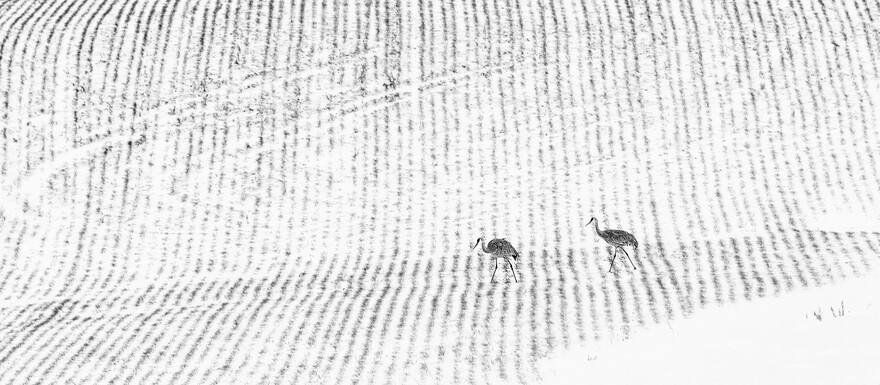This image was made close to home in Norfolk County in Southern Ontario, Canada. Once uncommon in our area, Sandhill Crane (Grus canadensis) numbers have been increasing locally in recent years. Their population is predictably present in the thousands from late fall into the early winter months in the Long Point area of the County. They feed on the remnants of corn in fields that have been commercially harvested in late October. Although some birds nest in the local marshes, most gather to feed in the farm fields on their way south from nesting grounds further north. Their numbers vary weekly and monthly as they come and go depending on the harshness of the winter weather. Since I live within a half hour of their feeding grounds, I am intimately familiar with the few square miles where they tend to be found. Of course, their specific numbers and location can and does vary from hour to hour and day to day. Chance and weather plays a big part in the success or lack thereof in terms of the photographic opportunities they present.
In this instance, a light snow had fallen after weeks of uninteresting weather. I headed by car to a specific country lane that I knew from past scouting faced towards an area of plowed rolling farm fields. Sure enough, a handful of cranes were feeding nearby. Using my car as a blind, I drove along the road with my window down, positioning the vehicle to overlook the graphic background. It was then a matter of waiting and hoping that the cranes would move into my chosen section of aesthetic landscape. Within 15 minutes or so, this pair wandered away from a larger group and strutted across the field. I was able to shoot off three frames before they had meandered away to a less visually interesting location.
I photographed with an Olympus E-M1mk2 body using a 40-150 mm zoom lens and a 1.4x extender. I intended to frame the pair of cranes from a distance within the context of this expansive graphic landscape of curves and lines, so a longer lens wasn't needed. Post production was uncomplicated--fine tuning the crop; simple exposure adjustments and local sharpening together with conversion to monochrome.


